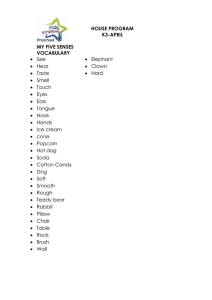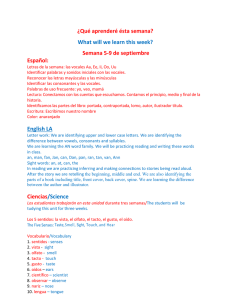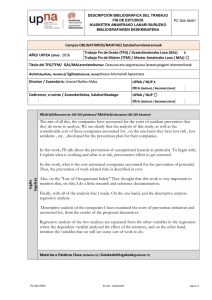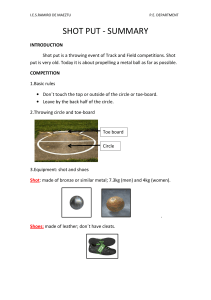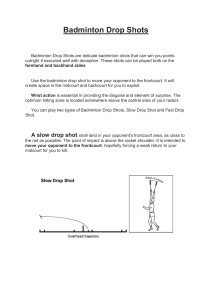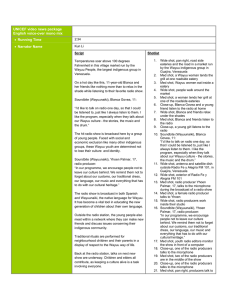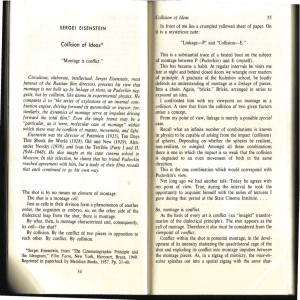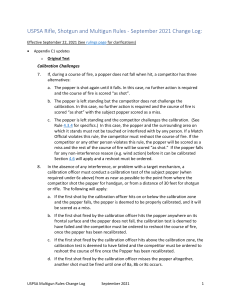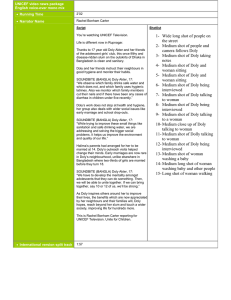Taking into account that golf finds the followers in Ukraine too our
Anuncio
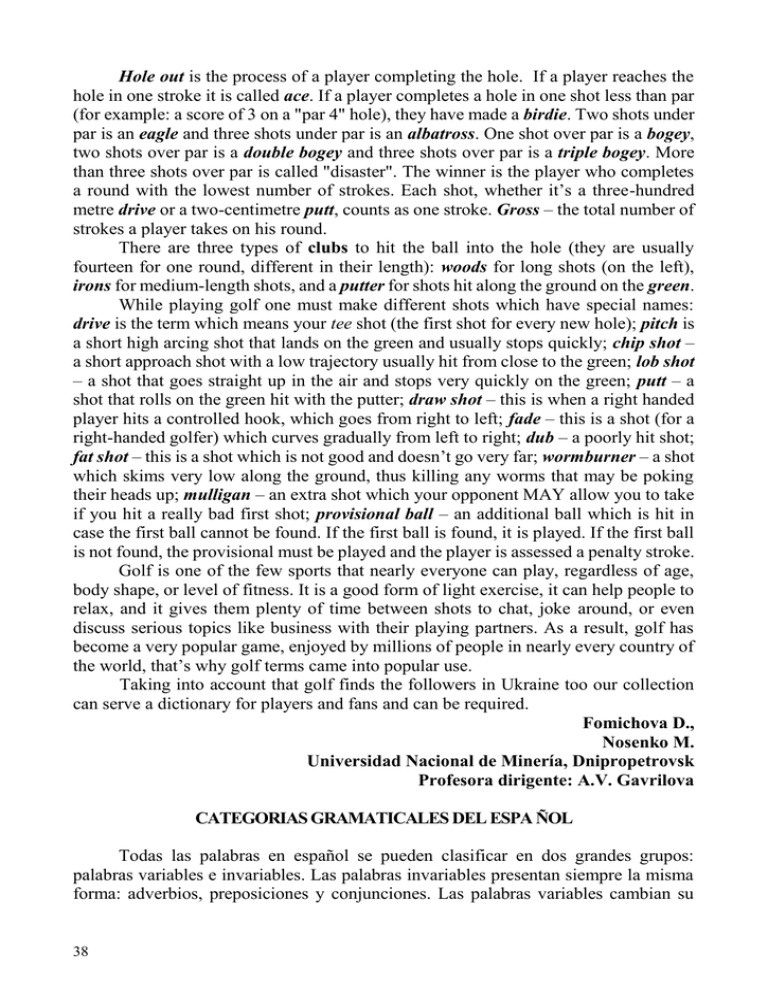
Hole out is the process of a player completing the hole. If a player reaches the hole in one stroke it is called ace. If a player completes a hole in one shot less than par (for example: a score of 3 on a "par 4" hole), they have made a birdie. Two shots under par is an eagle and three shots under par is an albatross. One shot over par is a bogey, two shots over par is a double bogey and three shots over par is a triple bogey. More than three shots over par is called "disaster". The winner is the player who completes a round with the lowest number of strokes. Each shot, whether it’s a three-hundred metre drive or a two-centimetre putt, counts as one stroke. Gross – the total number of strokes a player takes on his round. There are three types of clubs to hit the ball into the hole (they are usually fourteen for one round, different in their length): woods for long shots (on the left), irons for medium-length shots, and a putter for shots hit along the ground on the green. While playing golf one must make different shots which have special names: drive is the term which means your tee shot (the first shot for every new hole); pitch is a short high arcing shot that lands on the green and usually stops quickly; chip shot – a short approach shot with a low trajectory usually hit from close to the green; lob shot – a shot that goes straight up in the air and stops very quickly on the green; putt – a shot that rolls on the green hit with the putter; draw shot – this is when a right handed player hits a controlled hook, which goes from right to left; fade – this is a shot (for a right-handed golfer) which curves gradually from left to right; dub – a poorly hit shot; fat shot – this is a shot which is not good and doesn’t go very far; wormburner – a shot which skims very low along the ground, thus killing any worms that may be poking their heads up; mulligan – an extra shot which your opponent MAY allow you to take if you hit a really bad first shot; provisional ball – an additional ball which is hit in case the first ball cannot be found. If the first ball is found, it is played. If the first ball is not found, the provisional must be played and the player is assessed a penalty stroke. Golf is one of the few sports that nearly everyone can play, regardless of age, body shape, or level of fitness. It is a good form of light exercise, it can help people to relax, and it gives them plenty of time between shots to chat, joke around, or even discuss serious topics like business with their playing partners. As a result, golf has become a very popular game, enjoyed by millions of people in nearly every country of the world, that’s why golf terms came into popular use. Taking into account that golf finds the followers in Ukraine too our collection can serve a dictionary for players and fans and can be required. Fomichova D., Nosenko M. Universidad Nacional de Minería, Dnipropetrovsk Profesora dirigente: A.V. Gavrilova CATEGORIAS GRAMATICALES DEL ESPA ÑOL Todas las palabras en español se pueden clasificar en dos grandes grupos: palabras variables e invariables. Las palabras invariables presentan siempre la misma forma: adverbios, preposiciones y conjunciones. Las palabras variables cambian su 38 forma dependiendo del género, número, persona, tiempo y modo: sustantivos, adjetivos, pronombres, determinantes, artículos y verbos. Las formas de las palabras invariables: 1) Los adverbios expresan modo, lugar, tiempo, cantidad, afirmación y negación. Son invariables, presentan siempre la misma forma. Tales como: modo, lugar, tiempo, cantidad, afirmación, negación. 2) Preposiciones. Relacionan palabras. Puede ser una relación en el tiempo, en el espacio, posesión, de propósito. Presentan siempre la misma forma. 3) Conjunciones. Se usan para unir palabras, grupos de palabras y oraciones coordinadas y subordinadas. Son invariables. Las formas de las palabras variables: 1) Los sustantivos o nombres designan o identifican vivos, objetos e ideas y sensaciones. Los sustantivos varían en género y en número. 2) Los adjetivos describen a un sustantivo, expresan una cualidad de ese sustantivo. Varían en género y en número. Pueden expresar grado positivo, comparativo y superlativo. 3) Los pronombres se usan para reemplazar a un sustantivo, normalmente para evitar la repetición. Hay pronombres personales, demostrativos, indefinidos, posesivos y numerales. Varían en género, número y persona (personales y posesivos). 4) Adjetivos determinativos preceden al sustantivo y concuerdan con él en género y número. Seleccionan el ser vivo, objeto ó idea. Hay determinantes demostrativos, indefinidos, posesivos y numerales. Varían en género, número y persona (posesivos). 5) Los artículos, género y número. Los artículos son palabras que acompañan al sustantivo y lo especifican. Varían en género y número. Son cuatro: el, la, los, las. 6) Los verbos expresan acciones y estados. Se pueden conjugar, es decir, varían en persona (primera, segunda o tercera), en número (singular o plural), en tiempo (presente, pasado o futuro) y modo (indicativo, subjuntivo o imperativo). Así que existen dos grandes grupos de palabras españolas, que demuestran las categorías gramaticales del español. Galushka A. National Mining University Scientific supervisor: T. Y. Vvedenska ENGLISH TERMINOLOGY OF ELECTRICAL ENGINEERING. WORD BUILDING PECULIARITIES AND ITS TRANSLATION The study deals with the word building peculiarities of English terms, which can be found in Electrical Engineering literature. In the time of scientific and technological progress The Electrical Engineering is rapidly developing. There are new words that denote new devices and equipment. In the scientific literature these words are terms. The term is a word or phrase that indicates scientific or special notion clearly and 39
